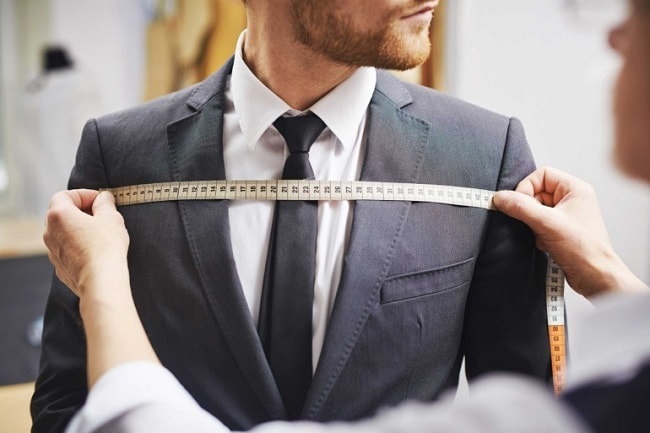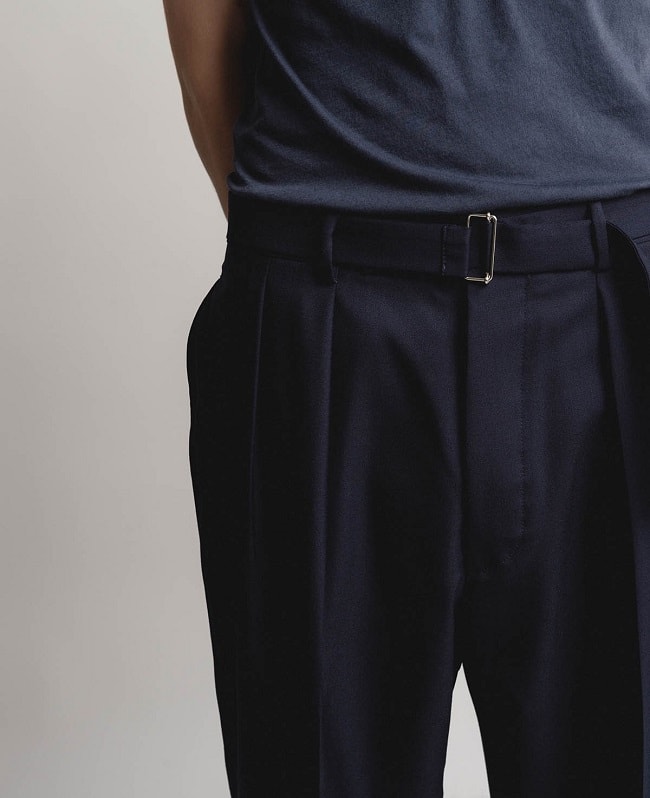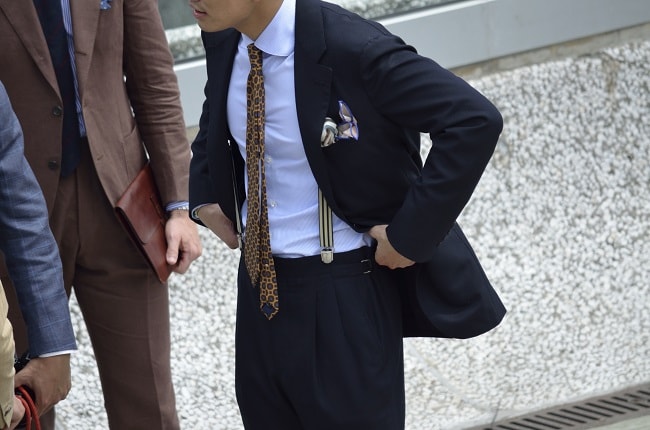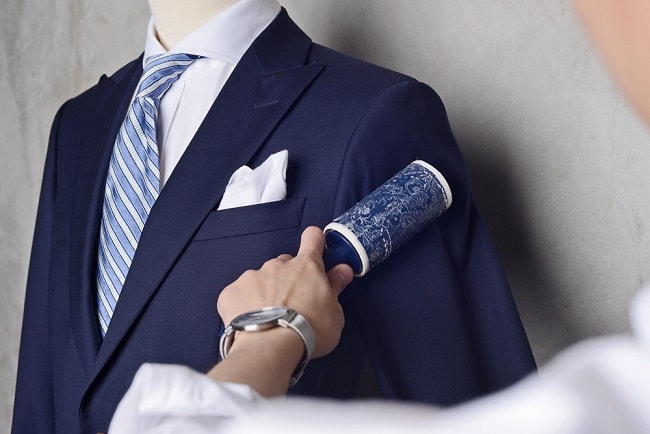1
HOME > Tips & Advice >
HOW TO ELEVATE A HIGH STREET SUIT
CLEAN-LINED TAILORING NO LONGER HAS TO COST A SMALL FORTUNE
Written by Orla Lavery in Tips & Advice on the 27th June 2017

In recent years the high street has really stepped up its sartorial standards when it comes to suits. From crisper collars, to well-fitted jackets, a clean-lined suit no longer has to cost a small fortune. But, the question still remains, how can you elevate your suit from shop-bought to Savile Row?
Fabric Selection
This is a really important step in choosing a good suit and lays the essential foundation to start elevating a high street suit. Try to steer clear of over 50% polyester or nylon in suit fabrics. Suits in these fabrics can look good on the hanger but once worn a couple of times their quality begins to show. A 50/50 wool-polyester blend is a much safer bet and the texture of the suit will look more expensive. Viscose is also a better alternative to polyester as it is a plant-based fibre that emulates the feel and look of silk; it also tends to keep a smooth texture over time. The best fabrics to look out for are wool, cotton, and linen - you want these to be the predominant fibres in the composition of the suit as this will really give you a good base to work with when accenting the suit. Some are more expensive that others but if you're frugal enough you can have a snoop online to get fashion offers available at different months of the season.

Get a Good Tailor
Undoubtedly the best way to make a standard suit look expensive, and good tailoring doesn’t have to cost much. The rise of affordable tailoring in London has meant that a simple alteration in 4 seams of a suit jacket won’t cost more than £30 ad can streamline your torso instantly making the jacket look much more expensive than what you paid for it. These kinds of alterations make a real difference to the fit and lines of the suit. Some high street stores like Reiss and Marks & Spencer are now offering free alterations on suits over £300 and this is really worth taking advantage of.

Prioritise Pleats
If there is one step anyone can take to elevate a suit, it’s making sure your suit trousers are properly ironed. It almost goes without saying, but the finest suit trousers will always be beautifully finished and worn with crisp pleats. It is so important to make sure that your suit trousers are in the right condition before you put them on. Whether they’re a little too far on the side of ankle-grazing, or the break by your shoes is just a little too long, sharp pleats will detract from these faults and instantly make your trousers look better. If you aren’t so hot with the old iron, then teach yourself. It will save you a lot of money in dry cleaning bills and once you get good at it, it can really be a time-saver. There are a plethora of videos and how-to guides online that won’t cost you a penny and could help your sartorial game immensely, there are no excuses, so iron your pleats please.

The Humble Pocket Square
If there is only one way you choose to accessorise your suit then the humble pocket square is a clear winner. Forget tie bars, collar clips, and lapel pins, a flash of silky pocket square exudes a sense of understated elegance that is hard matched by any of its suit-supplementing counterparts. On a recent trip to Milan I found 100% silk pocket squares with hand-rolled edges in a variety of elaborate and colourful patterns for only €10- okay so the flight to Milan might ramp up the cost, nonetheless- a pocket square can be an extremely reasonable addition to accent a simple suit.

After Care
An expensive suit always looks clean and well cared for, but this is really more confirmation bias, it’s not like the suit cleans and irons itself. If you buy an expensive suit you are much more inclined to look after it, you see it as an investment of sorts. Well, the same goes for high-street suits, the better care you take of it after you’ve worn it, the better it will look on. In fact, the best time to lint-roll, press, and hang your suit is straight after you’ve worn it, you are much more likely to take your time with it and get it back to its original condition after wearing it than when you’re in a hurry to get out the door.


Orla Lavery
Orla is a London-based fashion, arts and culture journalist, with a personal and professional habit in menswear. Having worked in the industry for over 10 years, she now specialises in the fashion business space, consulting to a number of brands on their business strategy and optimising for sustainable, long-term growth.


Trending
2
3
4
5
6
7
8
9
10









